Asakusa Kimono Rentals: 6 Excellent Shops and Where to Take Photos

When taking a picture of yourself exploring Asakusa's beautiful retro streets, why not wear a kimono that matches the atmosphere of this town? The local kimono rental shops offer various types of kimonos, from the traditional ones to retro and gothic styles.
Tokyo's Asakusa, Home to Amazing Kimono Rental Shops
Asakusa is a popular sightseeing destination in Tokyo that has retained its traditional townscape. It is also the perfect place to stroll around wearing a kimono.
In this article, we introduce five kimono rental shops in Asakusa. These shops offer various types of kimonos for rent with some even offering hair-styling services!
Kimono Rental Shops in Asakusa
1. VASARA
2. WARGO
3. Asakusa Taisho Romankan
4. COCOMO Kimono
5. Waraku
6. Kimono Rental REN
4 Lovely Photo Spots in Asakusa
Capture My Japan: A Recommended Photography Service
1. VASARA: A Large Kimono Collection with the Latest Items
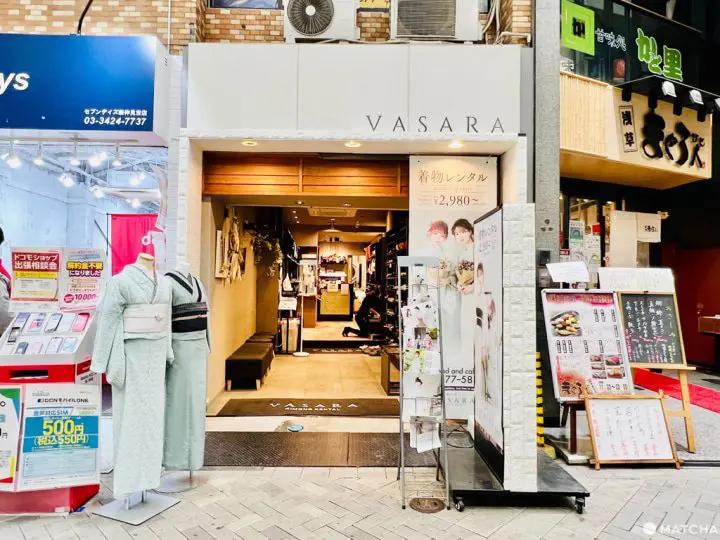
VASARA is a kimono rental shop that has expanded its location in Tokyo, Saitama, Kyoto, Okayama, and other regions. There are three stores in Asakusa alone: the Asakusa flagship store, Asakusa Ekimae store, and Sensoji store (Japanese). Please check out the official website for detailed information on how to access the shops.
Pictured above is the Asakusa flagship store. Several products are on display inside, including the latest kimonos.
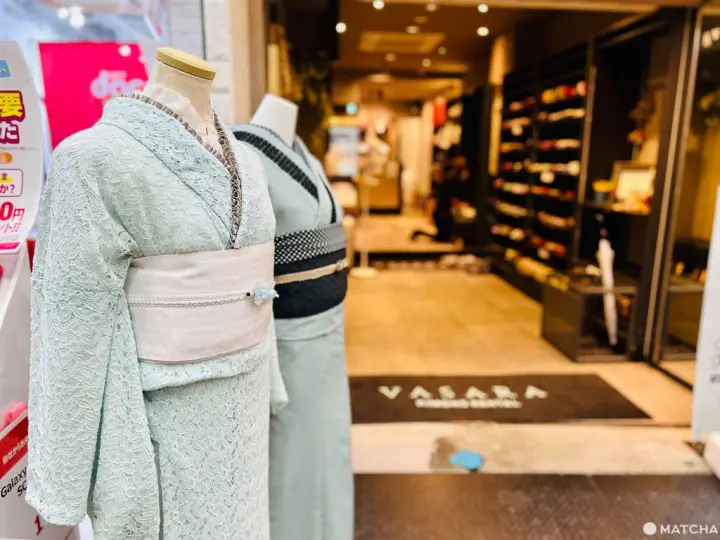
Outside the Asakusa flagship store
The shop carries a variety of kimono styles, including komon (made from textiles with repeating patterns), furisode (long-sleeved kimono), yukata (summer cotton kimono), and homongi (formal kimono). Of course, they also carry a variety of men's kimonos and yukatas.
The most reasonably priced komon kimono rental starts at 2,980 yen. It is available as a set with undergarments, a bag, tabi socks, zori sandals, and an ornamental hairpin.
Hairstyling is free if you request a simple updo hair arrangement. Elaborate hairstyles to match your kimono and additional hair accessories will cost an extra 1,100 to 2,200 yen.
↑ Return to the top of article.
2. WARGO: Traditional Kimono Rental Experience
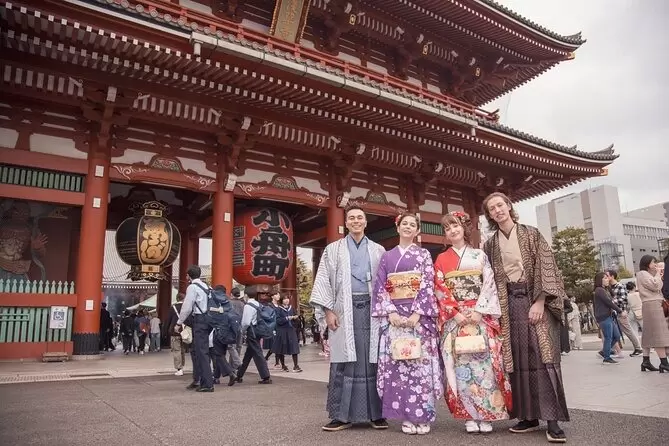
Picture courtesy of Viator
WARGO offers an extensive array of kimonos, spanning from classic motifs to contemporary styles, accompanied by knowledgeable staff to aid you in the dressing process.
The package comprises the kimono, sash belt (obi), Japanese clutch, sandals, and socks. Rest assured, hairstyling services are available for an extra fee.
Depending on availability, dressing typically requires under an hour, allowing you to embark on your journey swiftly. For those desiring to savor Japan in a kimono until dusk, next-day returns are feasible at an additional cost.
3. Asakusa Taisho Romankan: Travel Back to the Early Modern Japan!

Asakusa Taisho Romankan opened next to Sensoji Temple in 2021. It is a kimono rental and takeout cafe where visitors can experience the ambience of the Taisho Period (1912-1926).
The Taisho Period was a time when Western culture spread to the masses in Japan. Women during this era also adopted a distinct fashion style. At Asakusa Taisho Romankan, kimonos that showcase the spirit of this period are available to rent.
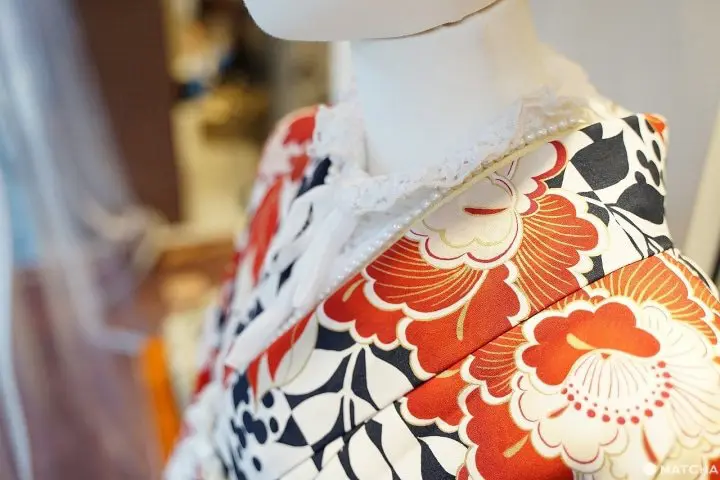
This type of kimono symbolizes the spirit of self-reliance that was commonly found during the Taisho Period. Western elements such as lace and pearl necklaces are added to bold, uniquely patterned kimonos. This style has been trending these past few years.
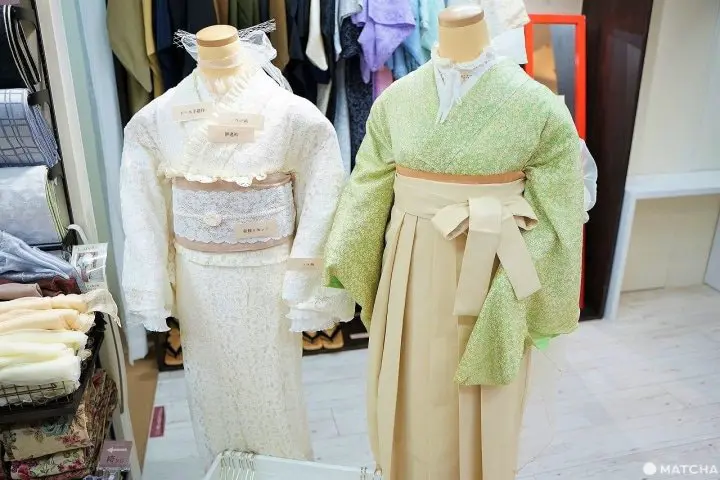
Asakusa Taisho Romankan offers several rental plans. There are two standard plans: the Kimono Plan (5,000 yen after tax) and the Hakama Plan (6,000 yen after tax). Additional plans include the Couple’s Plan and Student Kimono Plan.
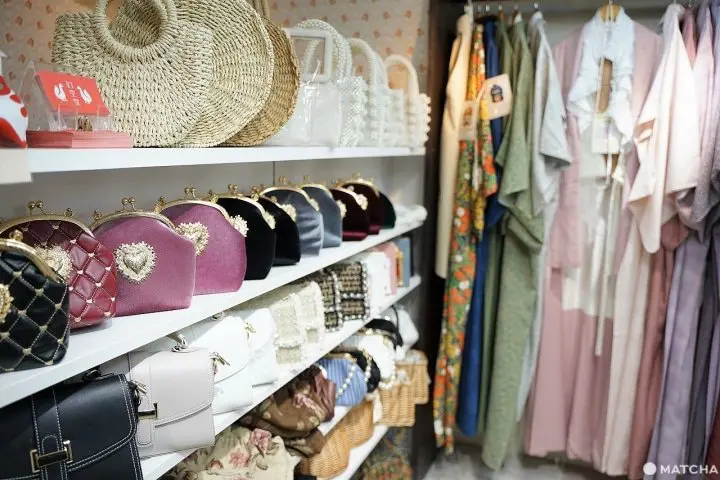
For an additional 500 to 2,000 yen, you can rent accessories, lace adornments, a silk fastener for your obi belt, and ribbons. It’s a fun option to coordinate a kimono outfit with bags and accessories.
Asakusa Taisho Romankan is a fusion between romantic kimonos and a retro coffeehouse. Wouldn't you like to travel back to early modern Japan?
Asakusa Taisho Romankan Reservation Website: https://www.asakusa-romankan.com/book-online (Japanese)
Hotels near Asakusa Taisho Romankan
4. COCOMO Kimono: Turn into an Oiran, Maiko, or Samurai for a Day!
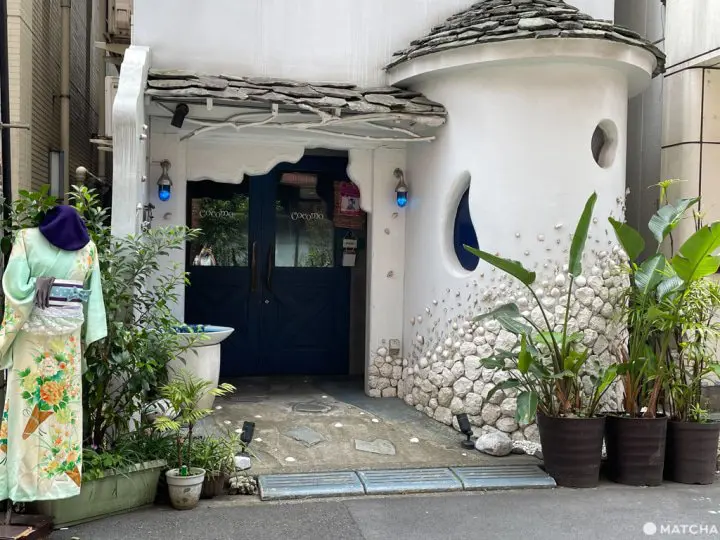
COCOMO Kimono is a kimono rental shop tucked away in a back alley near Asakusa Public Hall. One of its trademark is the lovely European-styled exterior. Please check the official website for detailed information on how to access the shop.
In the past, they have worked on the Fuji TV drama “The Fantastic Deer-Man” and “Doctor-X: Surgeon Michiko Daimon” due to their exquisite kimono quality and reliability.
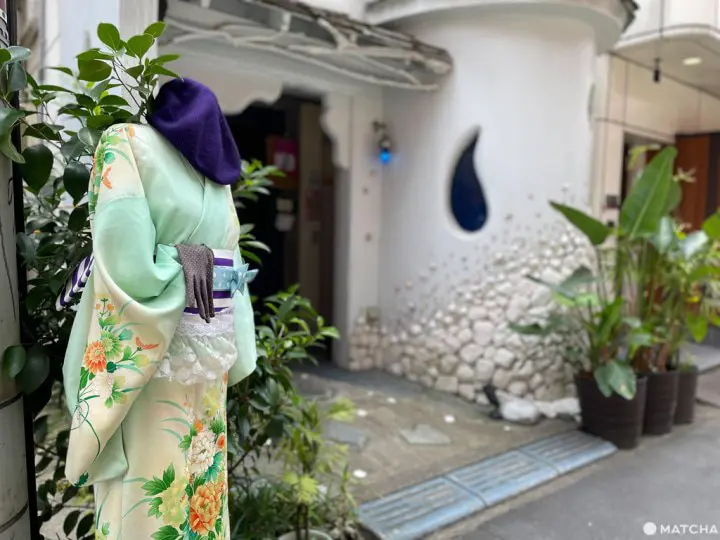
Styles offered here include traditional kimono, yukata, and homongi. The shop also has a photo studio inside. You can get your makeup done when taking photos in a bridal kimono or when booking the oiran, maiko, or geisha experience. Hairstyling services are included in the plan.
There are typical plans such as the standard, antique, and retro. More unique plans include the fancy princess, gothic, and Lolita-style Victorian themes.
The standard plan starts from 4,900 yen. For an additional 1,000 yen, you can have a partner join your plan. Booking a plan also allows guests to go on a rickshaw ride at a discounted price. Be sure to use this discount if you want to enjoy Asakusa to the fullest!
COCOMO Reservation Website: https://www.cocomo.tokyo/en/rental-yoyaku-en/
Hotels near COCOMO Kimono
↑ Return to the top of article.
5. Waraku: Amazing Location! A Minute from Asakusa Station
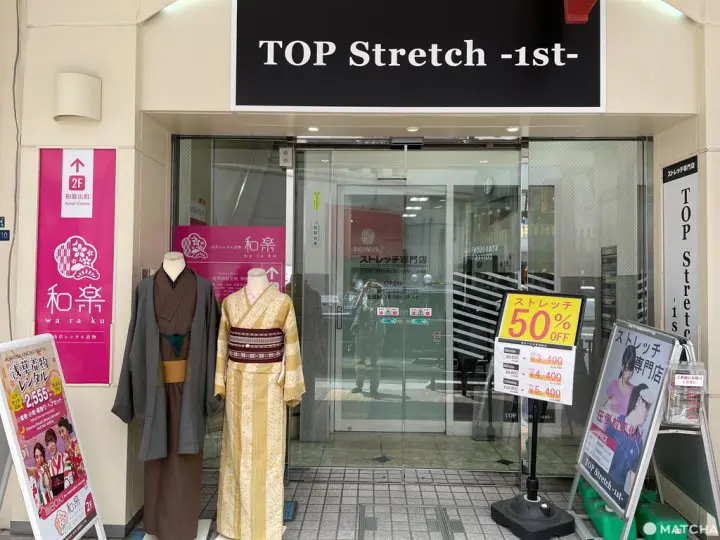
Waraku is an amazing shop if you want to rent a kimono at a lower price. They have various discounted plans, including a couple and group discount that corresponds to the number of people in your party.
The official website is available in English and Chinese (traditional and simplified). They also offer free services including selfie stick rentals and mobile phone chargers.
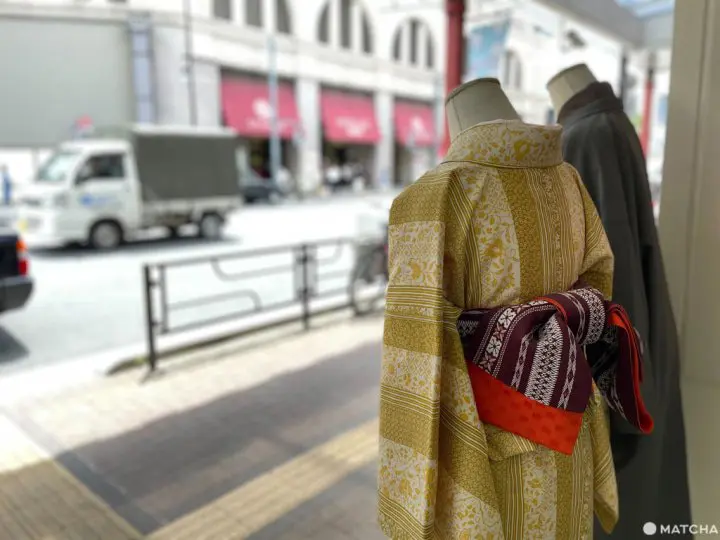
While Asakusa is typically seen as a daytime sightseeing destination, it's very enchanting at night. For those interested in exploring Asakusa in the nighttime, we recommend the night package plan available after 15:00.
There are few people in the area at night by the illuminated Sensoji Temple, making it perfect for taking many photos. You can commemorate your visit by taking a special photo.
Moreover, your rented kimono can be returned the next day. Make the most of Waraku and enjoy the night in Asakusa to your heart's content!
Waraku Reservation Website: https://waraku-asakusa.com/en/reservation/
Hotels near Asakusa Rental Kimono Waraku
↑ Return to the top of article.
6. Kimono Rental REN: Multilingual Support
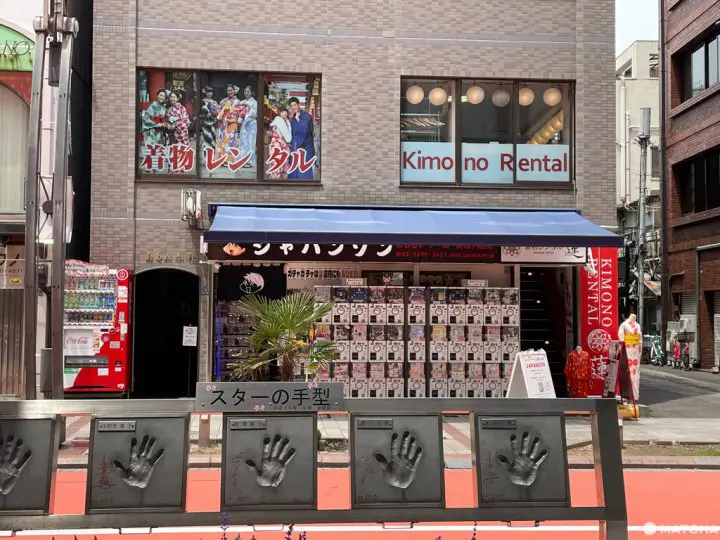
REN is a kimono rental shop accessible three minutes on foot from Sensoji Temple. They have staff who can assist customers in multiple languages, including English and Thai. This is great for overseas tourists who may not be confident in their Japanese speaking skills.
There is a small photo studio inside that can be used for photoshoots with traditional props like Japanese swords or Japanese-style umbrellas.

They offer a wide variety of kimonos with designs that range from elegant to casual. Make a reservation beforehand to get your rental at a great price. The shop also has furisode and shoken silk kimonos. You'll definitely have a special kimono and Asakusa sightseeing experience by booking a rental here.
REN Reservation Website: https://kimono-ren.com/en/
Hotels near REN-REN-
↑ Return to the top of article.
Top 4 Spots to Take Pictures in a Kimono
Next, we'll introduce four spots in Asakusa that are perfect for taking pictures in kimono.
Asakusa Nishisando Shopping Street
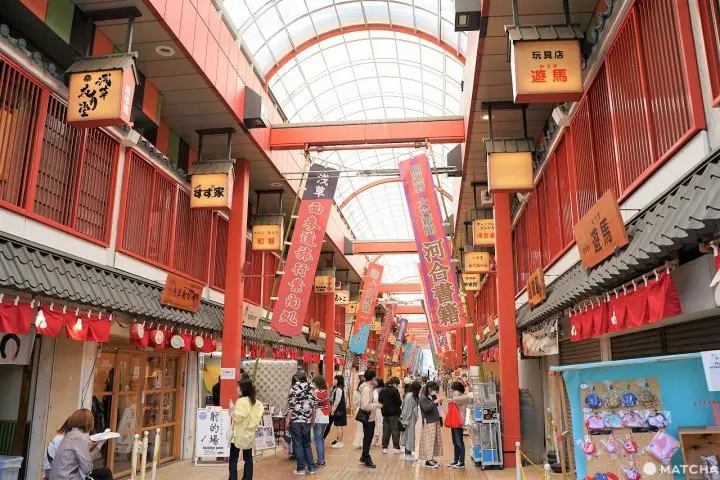
Exit Sensoji Temple Main Hall and turn right to see a five-storied pagoda on your lefthand side. Nishisando Shopping Street is located straight ahead.
The shopping street is an arcade embellished with Japanese-style decorations, making it perfect for photos in a kimono.
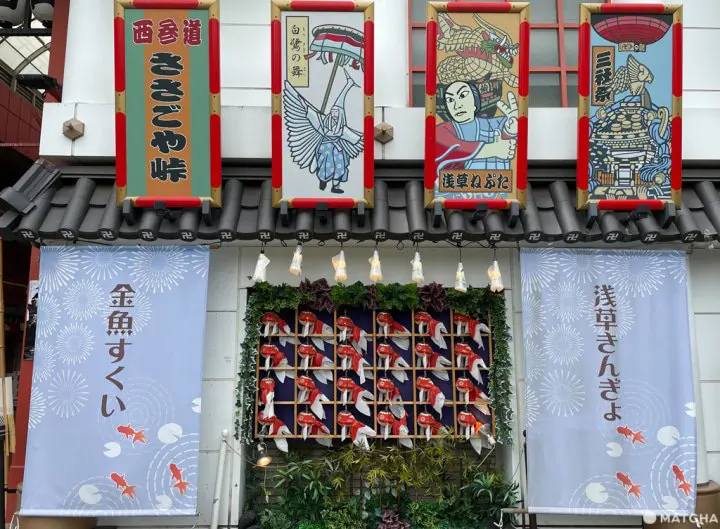
Next to the entrance of the shopping street is a shop offering a goldfish scooping game year-round and specializes in goldfish-themed goods. The shop has even been featured in commercials and on television. The wall outside is also a famous photo spot.
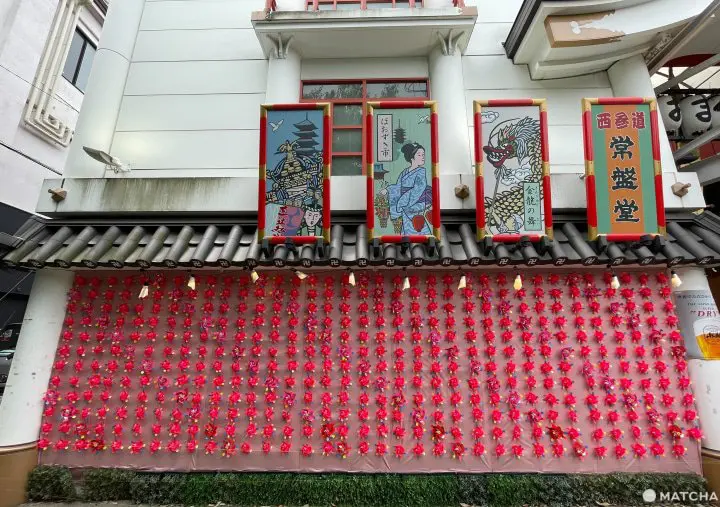
Feel free to take a picture in front of this pinwheel-decorated wall on the other side too!
Hotels near Asakusa Nishisando Shopping Street
Asakusa Taisho Romankan

Photo courtesy of the PR Times
Taisho Romankan, the first kimono rental shop introduced in this article, has tons of self-photography spaces inside their shop.
The first floor is a cafe with a substantial menu. The High-Collar Cream Sodas are perfection! This will no doubt be a photogenic spot for your social media posts.
*Please make a purchase from the cafe before taking photos inside.
Hotels near Asakusa Taisho Romankan
Sensoji Temple
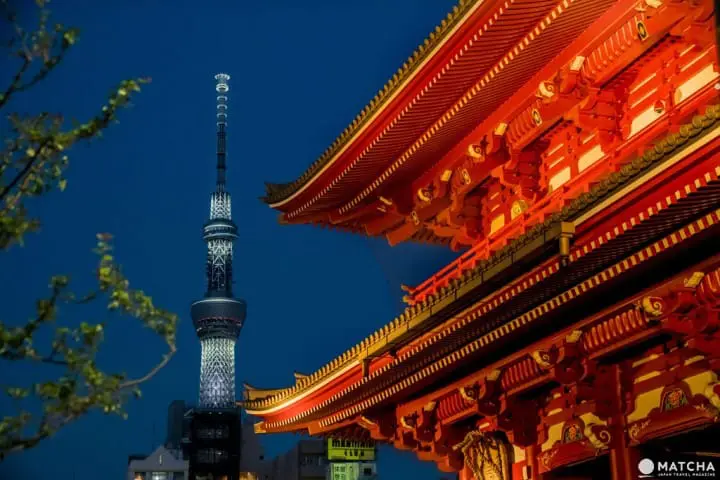
Put on a kimono and take a stroll through Asakusa at night. The illuminated Sensoji Temple has a certain charm as its vermillion hues shine brilliantly against the Tokyo Skytree in the backdrop.
Why not experience this dreamlike mood while dressed in a kimono?
Hotels near Sensoji Temple
Read also
Mametoku Asakusa Store
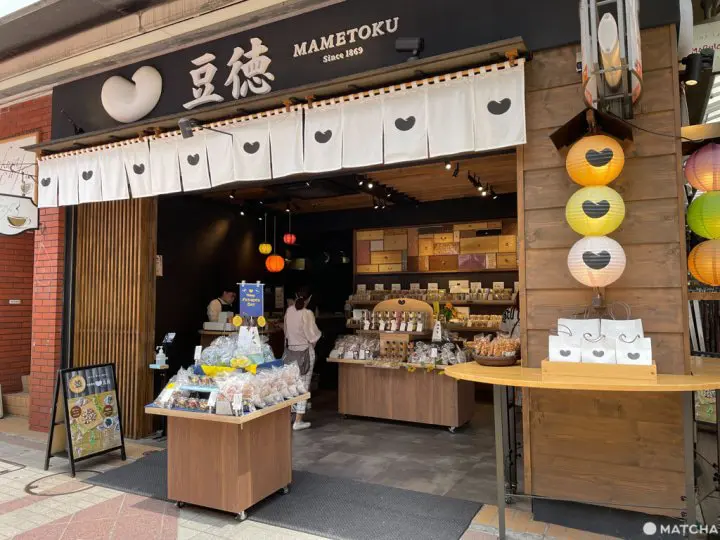
Mametoku is a specialty beans shop that originated in Hiroshima. They have been creating innovative flavors since the Meiji Period. The Fruit and Veggie Chips with Lactic Acid is extremely popular among overseas visitors.
Mametoku's storefront is wonderfully designed with adorable dango-shaped paper lanterns in three assorted colors. We recommend purchasing products inside, then taking a commemorative photo outside with your souvenirs.
Hotels near Mametoku
Read also
↑ Return to the top of article.
Capture My Japan: A Recommended Photography Service
Capture My Japan is an on-location photography service tailored for international travelers visiting Japan. With bases located nationwide, we offer English-speaking photography services in various regions such as Tokyo, Kyoto, and Osaka.
Why not immortalize your precious memories in Japan with Capture My Japan? When applying, use the coupon code MATCHA-11208 to enjoy a 5% discount on your photo shoot!
Read also
FAQ
How much does it cost to rent a kimono in Japan?
The cost of renting a kimono in Japan can vary depending on various factors such as the type of kimono, accessories included, the rental duration, the location, and the season. On average, the cost of renting a kimono for a day in popular tourist areas can range from around 3,000 yen to 10,000 yen or more. This price often includes the kimono rental, obi (sash), accessories like sandals and handbags, hairstyling, and sometimes even the option for professional photoshoots.
In some cases, more luxurious kimono rentals or specific kimono designs may cost higher, especially during peak seasons or in prestigious kimono rental shops. These shops may offer a wider selection of kimono styles and accessories, along with additional services that can contribute to a higher overall cost. It is recommended to check with the specific kimono rental shop for their pricing details and any additional charges that may apply to tailor your kimono rental experience according to your preferences and budget.
Why is Asakusa so famous?
Asakusa, a renowned district in Tokyo, is celebrated for its rich cultural heritage and iconic landmarks that draw visitors from around the world. The historic Senso-ji Temple, Tokyo's oldest temple, stands as a focal point, accompanied by the bustling Nakamise shopping street showcasing traditional crafts and treats. Asakusa preserves a traditional ambiance with historic architecture, offering insights into Tokyo's past while providing a variety of dining options and entertainment choices. Festivals like the lively Sanja Matsuri infuse the area with vibrant celebrations, while the nearby Tokyo Skytree Tower offers modern panoramic views. The district's location along the scenic Sumida River adds to its allure, providing opportunities for leisurely boat cruises and idyllic riverside strolls. From cultural experiences to culinary delights, Asakusa offers a quintessential Tokyo experience blending old-world charm with contemporary attractions, making it a must-visit destination for travelers exploring the city.
Is it okay to rent a kimono in Japan?
Renting a kimono in Japan is a popular and culturally enriching activity that many visitors enjoy during their stay. It provides an opportunity to immerse yourself in Japanese tradition, experience wearing a beautiful and elegant garment, and explore the local culture. Renting a kimono allows you to walk through historic streets, visit temples and shrines, and take stunning photos in traditional attire. Kimono rental shops often provide assistance with dressing, hairstyling, and accessories, ensuring you have a comfortable and authentic experience. Renting a kimono in Japan can be a memorable and enjoyable way to connect with the country's rich heritage and create lasting memories of your visit.
What not to do when wearing a kimono?
When wearing a kimono in Japan, it's essential to adhere to certain etiquettes to show respect for the garment and the cultural traditions it embodies. Avoiding misalignment of patterns, tying the obi incorrectly, wearing inappropriate footwear, selecting unsuitable accessories, opting for improper hairstyles, and neglecting to wear the appropriate undergarments are all key considerations to remember. These etiquettes emphasize the importance of maintaining the elegance, simplicity, and cultural integrity of the kimono attire, ensuring that wearers present themselves respectfully and authentically while embracing this iconic Japanese garment.
What do I wear under my kimono?
When wearing a kimono, traditional undergarments are crucial for a proper fit and to maintain modesty. The juban, a lightweight kimono-like garment, serves as the primary underlayer, protecting the kimono from body oils and sweat while providing a smooth surface for the outer kimono to drape elegantly. For formal occasions, a longer nagajuban may be worn to complement the kimono. The haneri, a decorative collar attached to the juban, adds a touch of style visible at the neckline. A date-jime belt helps secure the kimono and shape the obi when tied around the waist, ensuring a polished appearance. Additional undergarments like slips or undergarment shorts are also worn to maintain modesty and enhance the overall attire, completing the layers essential for a traditional and comfortable kimono ensemble.
What are the rules of a kimono?
Wearing a kimono in Japan entails adherence to various rules and etiquettes to honor the garment's cultural significance and showcase respect for tradition. Key guidelines include selecting the appropriate kimono pattern and style based on the event's formality, tying the obi correctly and at the proper height with alignment to the kimono collar, and layering each garment in the correct order for a polished appearance. Attention to detail also extends to footwear choice, ensuring proper wear and observance of footwear etiquette. Handling the kimono with care, selecting suitable hairstyling and accessories, and understanding how to clean and store the garment are essential components of wearing a kimono with reverence and authenticity. By following these rules, wearers demonstrate a deep appreciation for Japanese culture and the artistry of traditional attire.
What is the difference between a yukata and a kimono?
The yukata and kimono, two traditional Japanese garments, differ significantly in design, fabric, formality, and occasion. Yukata are lightweight cotton garments with colorful, casual patterns, worn in summer for festivals and casual outings. In contrast, kimono are formal attire made of luxurious silk with intricate designs, suitable for ceremonies, weddings, and special events. Yukata feature narrow obi tied in simple bows, while kimono have wider, more elaborate obi tied in various styles to match the occasion's formality. Yukata are often paired with wooden sandals or flat shoes, while kimono require formal footwear like zori or tabi socks. Yukata are more relaxed and seasonal, while kimono represent elegance, formality, and tradition, reserved for significant ceremonies and special occasions in Japanese culture.
Explore Asakusa Wearing a Kimono!
Asakusa is not only a popular sightseeing spot. It is also where you can experience the traditional downtown area, entertainment, and culture. Wear a kimono, stroll the streets of Asakusa, and immerse yourself in the old and lively atmosphere only found here.
Read also
Main image by Pixta



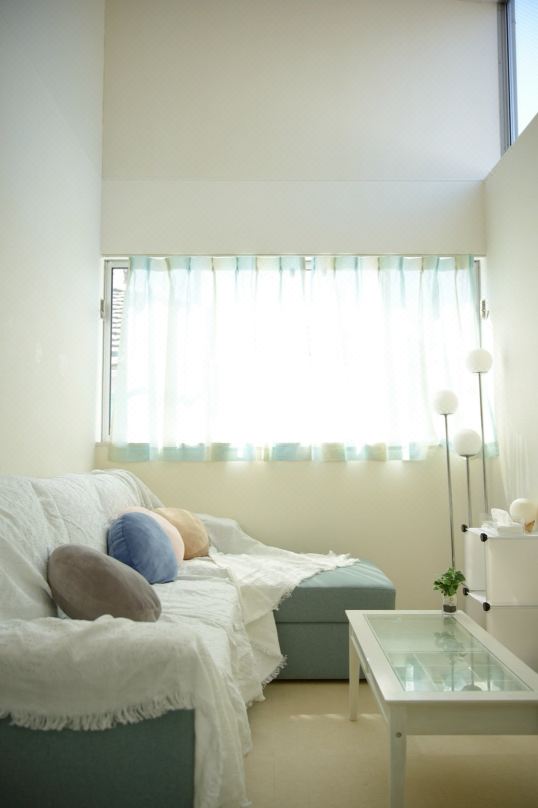

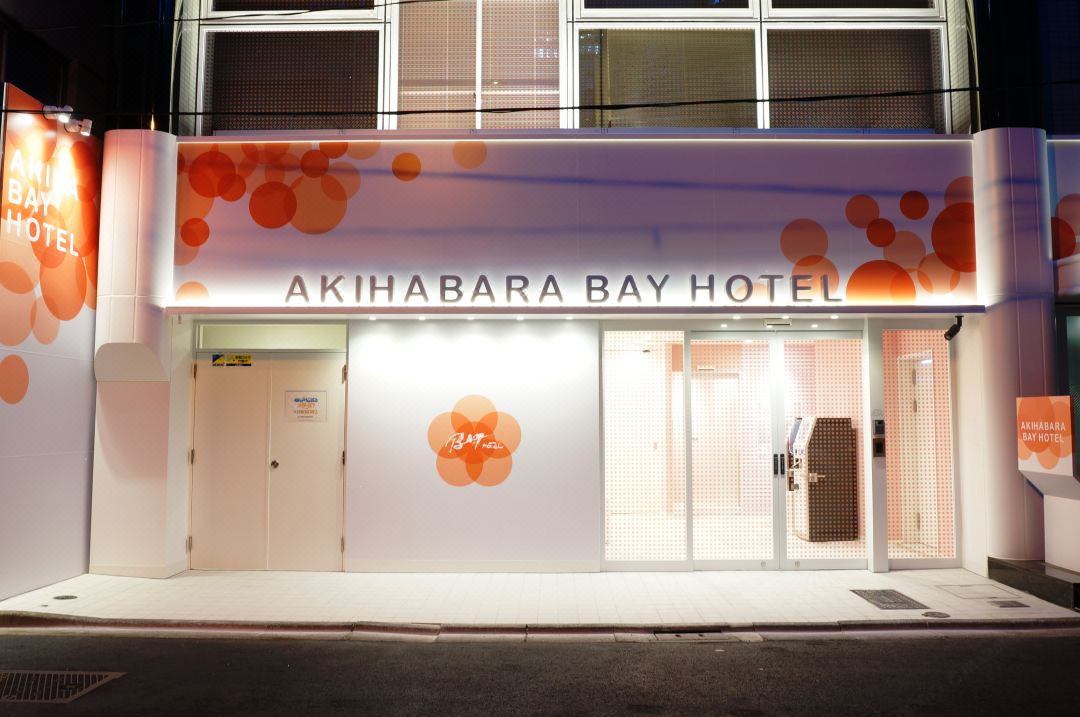
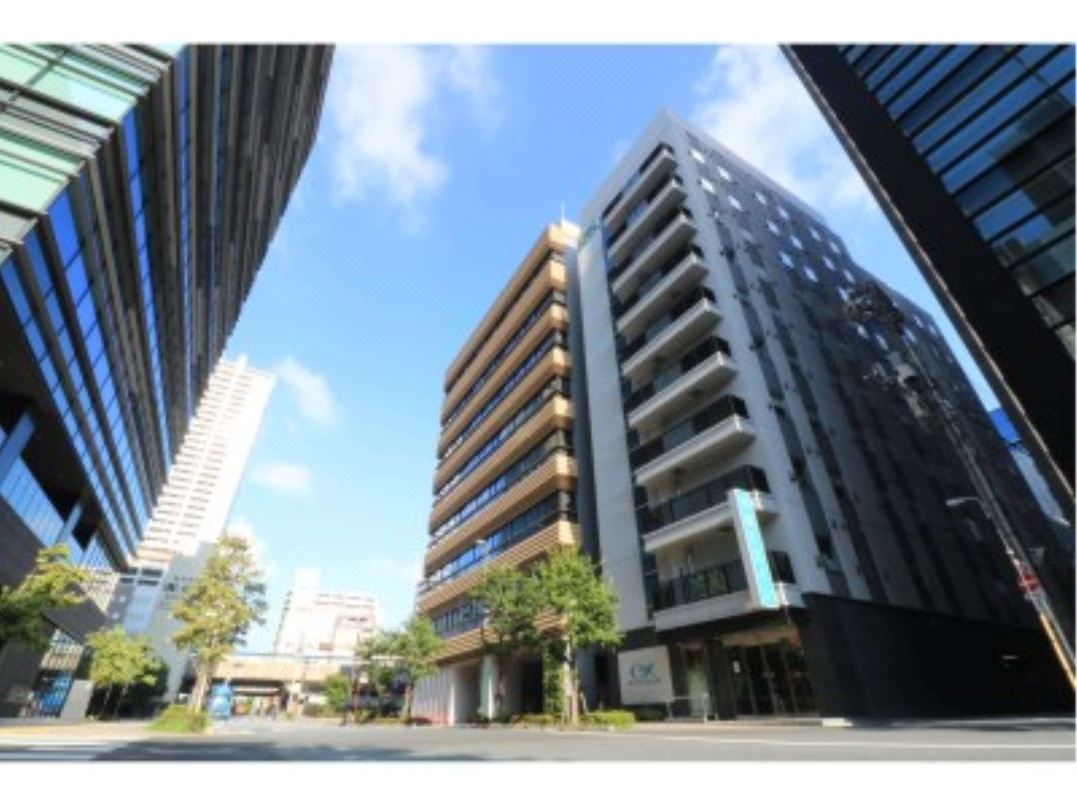


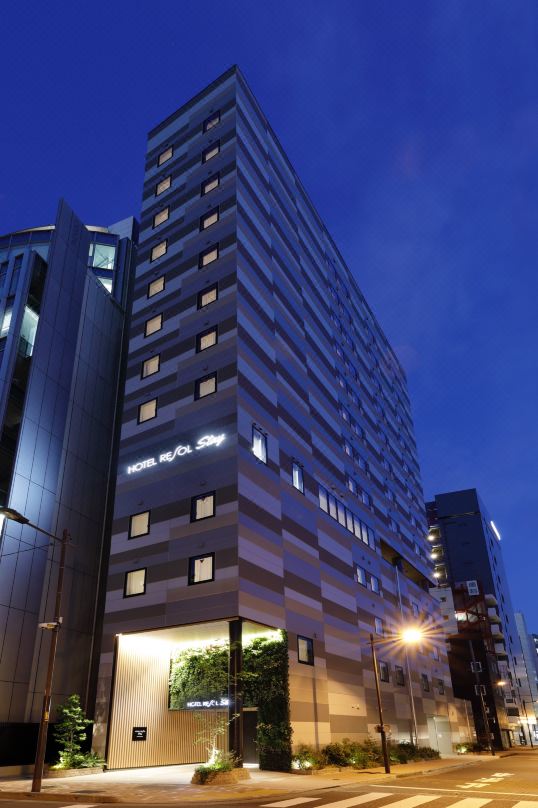



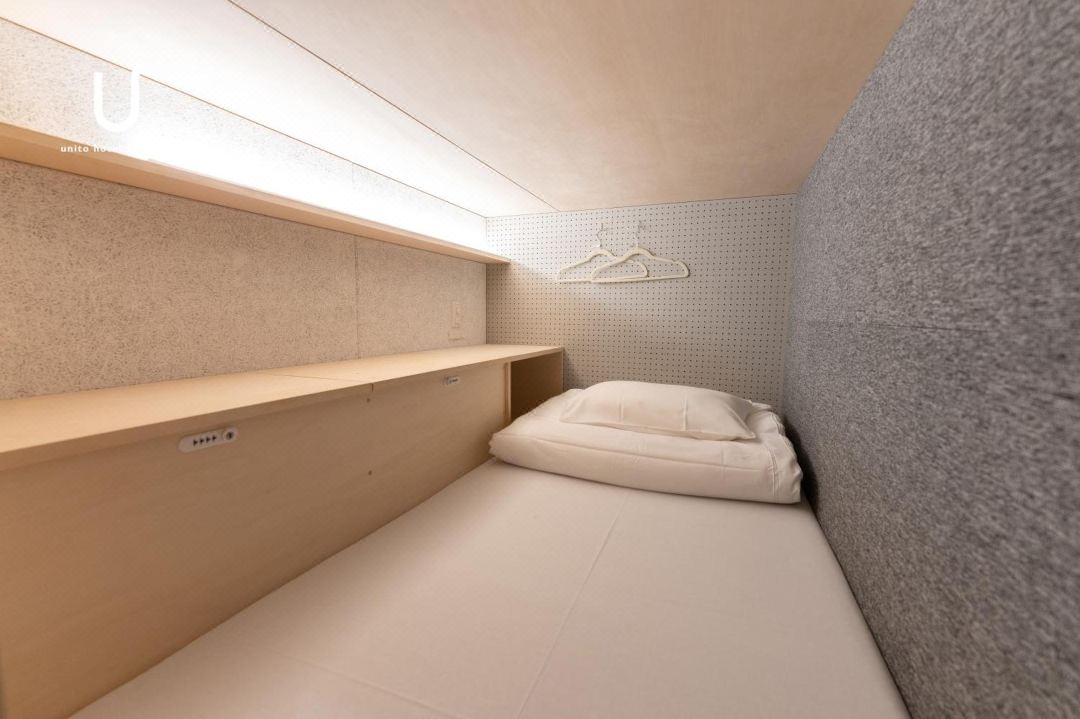

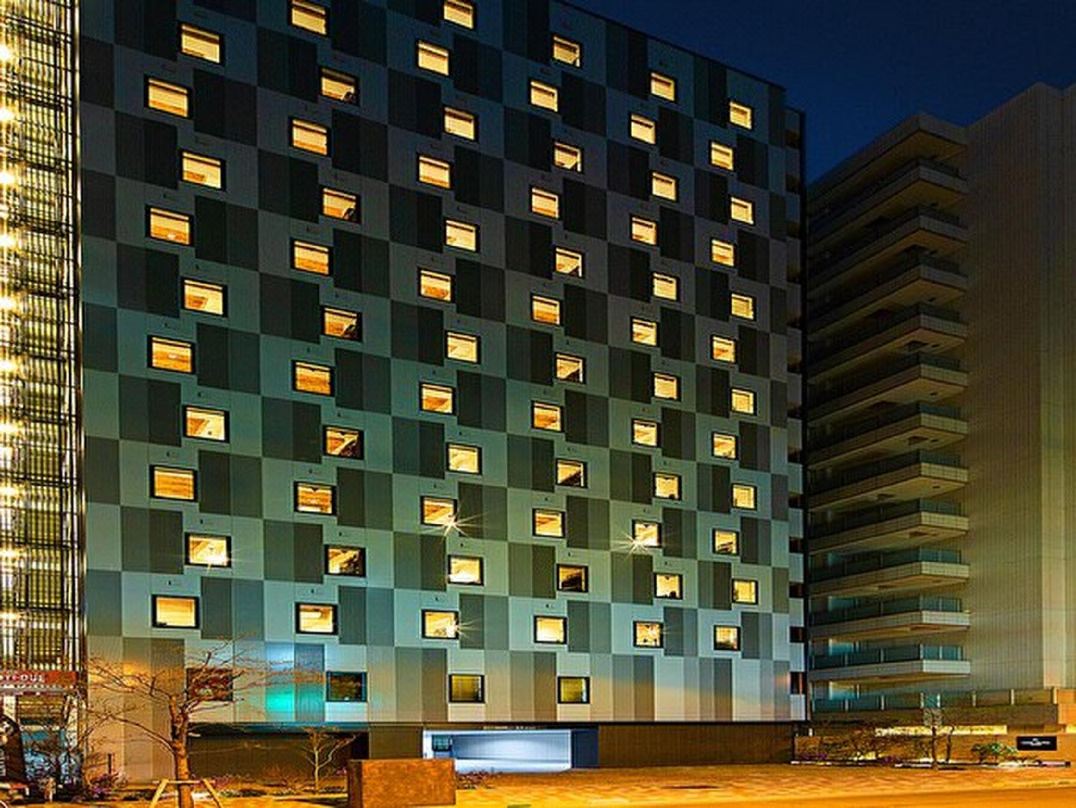

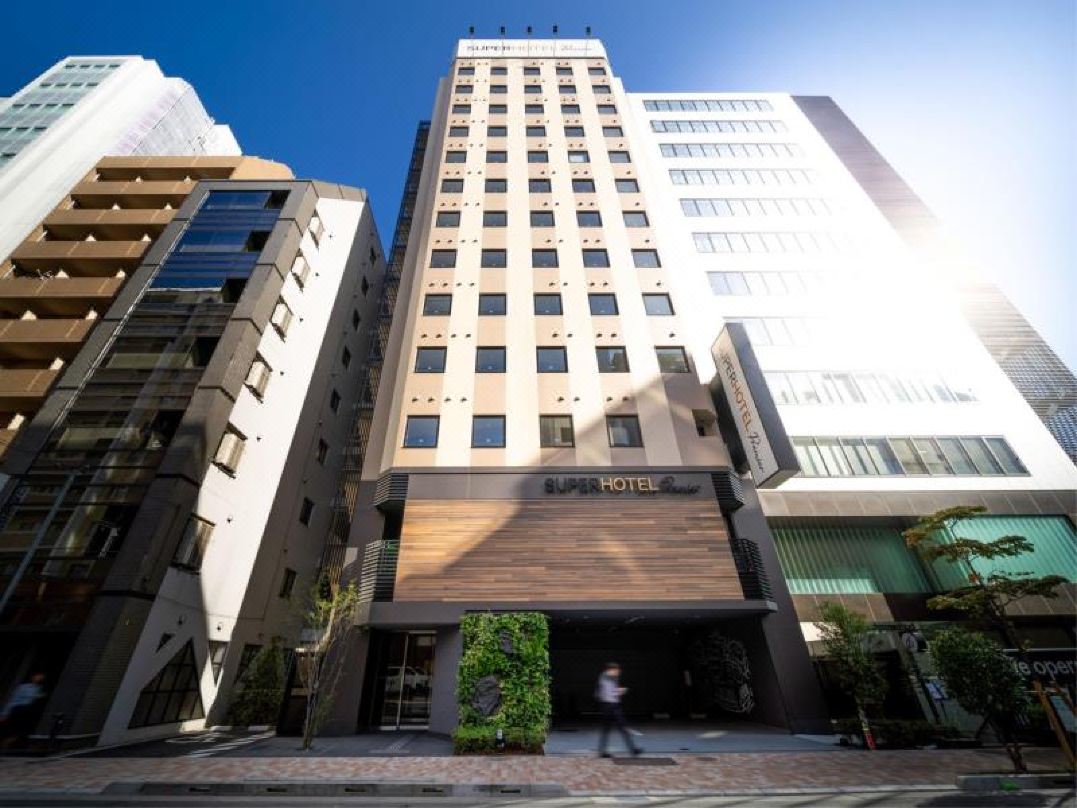






































![[2026] Top 5 Strawberry Picking Spots in Tokushima, Naruto| Farms and Access Guide for January to May](https://resources.matcha-jp.com/resize/720x2000/2025/03/06-227165.webp)
![[Yamanashi/ Hokuto City] 4 Hot New Spots Opening in 2026](https://resources.matcha-jp.com/resize/720x2000/2025/12/12-252747.webp)


